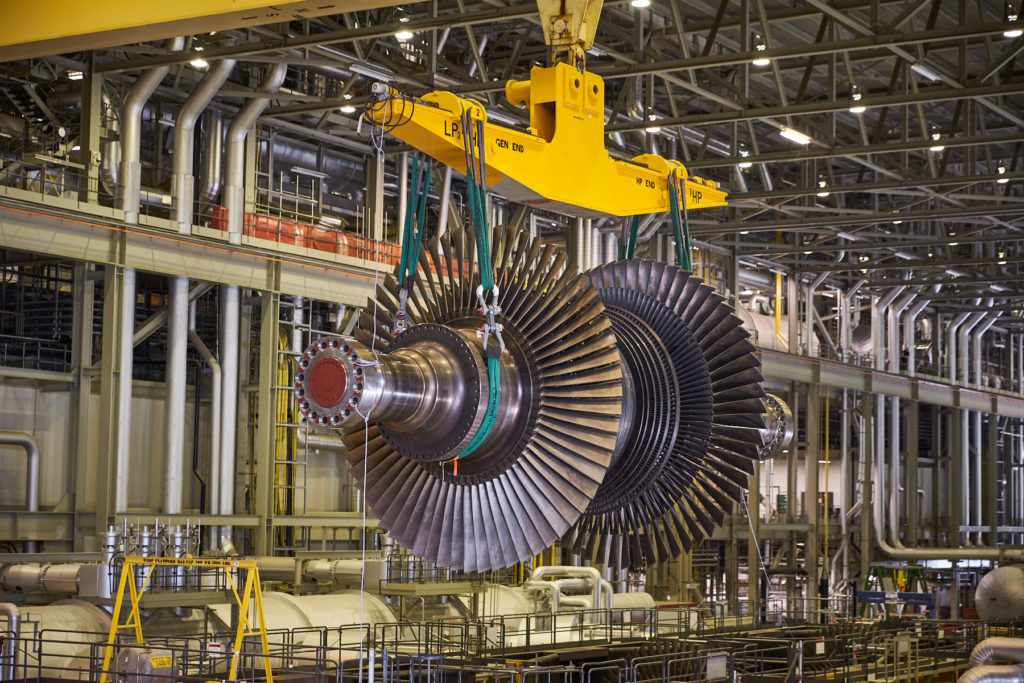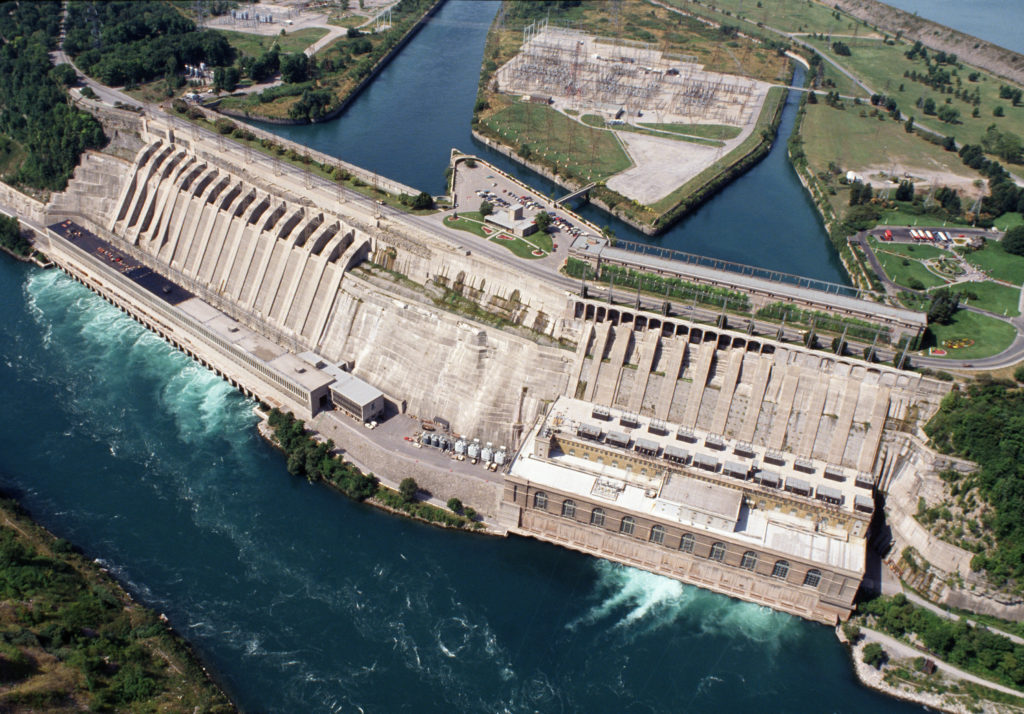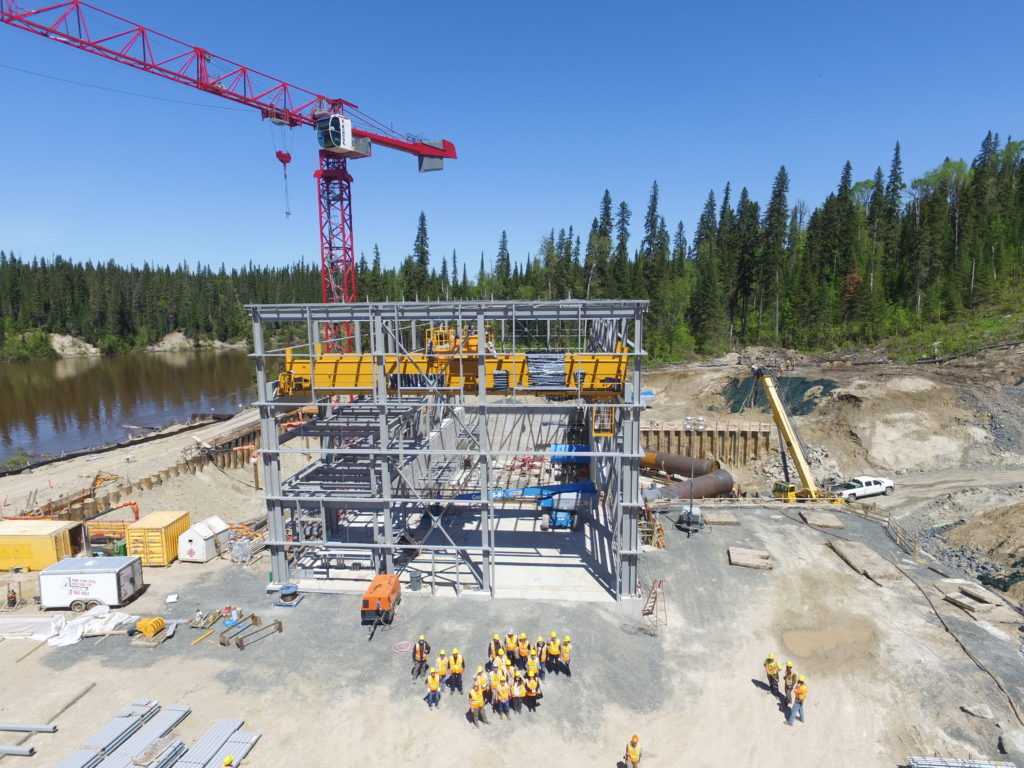The Story in Brief
“To decarbonize the electric power system, it takes fully leveraging every technology and tool available to you,” says Jeff Lyash, President and CEO of Ontario Power Generation (OPG). In this interview with EPRI Journal, Lyash discusses the keys to success with his company’s decarbonization efforts, nuclear power refurbishment, and customer engagement.

EJ: You previously served as CEO of Progress Energy in Florida, and now you’re a CEO for a power company in Ontario where it’s much colder. How was the transition?
Lyash: The first winter I was up here, I went to one of our far northern plants at Moosonee on James Bay. There I was reminded that Celsius and Fahrenheit are the same temperature at -40°. It’s a colder climate, but you wear the right clothes and get out there and take care of business just like anywhere else.
EJ: OPG’s power generation today is more than 99% free of carbon emissions. What has driven the success of your decarbonization efforts?
Lyash: I would start by saying that it takes consensus—among federal and provincial policymakers and business leaders—that decarbonizing electricity is necessary, desirable, and adds value to society. Without consensus, it’s very difficult to make progress. Once you have it, decarbonizing the electricity sector is doable technically. Difficult certainly, but doable.
A second lesson is that to decarbonize the electric power system, it takes fully leveraging every technology and tool available to you. People tend to gravitate toward their favorite technology—wind, solar, nuclear, or biomass—but electric power systems are regional in nature. You have to consider the resources in your region—more wind in some locations, more sun in others, more hydro in others. In Ontario’s case, it was deploying biomass, wind, and solar; expanding the natural gas fleet; expanding and optimizing hydropower facilities; and continuing to invest in nuclear power.
A third lesson is that these technologies and decarbonization come at a price. It’s important to be transparent and fair with customers about the price impacts. Ontario’s system operator is evaluating ways to protect consumers from large cost increases.
EJ: Explain how your region’s resources have shaped your decarbonization efforts?
Lyash: In 2009, Ontario established a feed-in tariff that has since built a sizable portfolio of wind and solar in the province. So we have pressed into wind and solar deployment. However, solar incidence in Ontario is not what it is in Arizona. Wind can be a useful and cost-competitive resource here, but it tends not to be synchronized with peak demand.
Our objective is a low intensity of carbon per kilowatt-hour of generation, not a certain percentage of renewables. That’s what I believe the objective should be if the primary focus is addressing climate change. So, we have tried to identify more impactful ways to decarbonize.
We have a strong tradition of hydroelectric power and have invested several billion dollars in expanding the fleet, adding new generating stations and increasing the energy and capacity of our existing facilities. These investments are capital-intensive on the front end but are cost-effective over their 50-, 75-, 100-year lives.
We have preserved and optimized our nuclear fleet, which is a primary source of bulk greenhouse gas–free energy. About 60% of the megawatt-hours consumed by Ontarians every year comes from the fleet.

EJ: How does your company plan to drive further reductions in greenhouse gas emissions?
Lyash: The carbon intensity of Ontario’s electrical production system is on average about 40 grams per kilowatt hour. This is a very low number. The United States on average is around 350 grams per kilowatt-hour, and Germany is about 550 grams per kilowatt-hour. Zero is not substantially better than 40 when the rest of the world is at 500, so our objective is not driving further emissions reductions. Rather, it is to maintain the low greenhouse gas intensity.
How do we do that? We will continue to expand the amount of energy we get out of our hydroelectric fleet. We have other hydropower projects in northern Ontario that we could bring into service if demand requires it. Over the next couple of decades, optimizing the fleet is going to be important. In Ontario, the river systems that the hydropower stations run on have some flexibility for impounding water and timing its release.
We are refurbishing our nuclear fleet with an eye toward operating these plants for another 30 to 50 years. At our four-unit Darlington Nuclear Generating Station, we are well into a $12.8 billion refurbishment that will make those units long-term players in keeping our carbon intensity low. We’re considering new utility-scale small modular reactors and have a license to construct up to 4,800 megawatts of capacity at Darlington when the time and technology are right. We also are working with Canadian Nuclear Laboratories on very small modular reactors (under 50 megawatts) that could be deployed in remote communities and remote mining and other extraction facilities. These will replace diesel generation.
We are engaged in various energy storage activities. I hear some folks say, “We need storage because of the intermittency of wind or solar.” That may be true, but I don’t think of storage as tied to any particular technology. I think of storage as a technology for synchronizing generation assets with the load profile. We’re using storage to help address the off-peak nature of wind and to optimize the performance of our hydropower fleet. At Sir Adam Beck Hydroelectric Generating Stations, we just refurbished our pumped hydro storage facility, extending its life by 50 years. It’s one of the largest installations of its type in North America. We have several other pumped hydro storage opportunities that we can pursue when the time is right. And we’re looking at grid-scale battery storage to help optimize dispatch.
Most recently, OPG launched a new partnership with Stem to provide artificial intelligence–driven, advanced energy storage systems that will help Ontario industrial manufacturers manage electricity costs.
Natural gas is an important part of our mix—for capacity and energy—and we are investing in natural-gas combined-cycle technology. It’s entirely possible down the road for us to implement cost-effective carbon capture on a natural gas generation facility.
We’ve also looked beyond our borders to participate in low carbon generation. OPG recently entered into a purchase and sale agreement to acquire 100% of the equity of Eagle Creek Renewable Energy, an owner and operator of small hydropower facilities in the United States.

EJ: What is the role of electrification in decarbonizing Ontario?
Lyash: In addition to keeping our carbon intensity low, we want to use electricity to drive carbon out of other sectors of the economy. In Ontario, about 80% of greenhouse gas emissions comes from transportation, space heating, and industrial. Efficiently electrifying these sectors and displacing petroleum is the lowest-cost approach to take carbon out of the economy.
EJ: As a generation company, what is OPG’s role in electrifying these sectors?
Lyash: We play a couple of roles. A company like OPG can be helpful in supporting policy analysis and development and in identifying viable pathways to achieve targets. We can also be directly involved in investing in infrastructure to support electrification. The 60 local distribution companies in Ontario certainly have a role, but OPG’s advantage is that we span the entire province. We can help promote conversion of transportation fleets, whether it’s public transit across the province, the rail system, or commercial and industrial fleets.
EJ: What lessons can the electric power industry draw from Ontario to make nuclear more cost-competitive in the United States?
Lyash: A big lesson learned for me is that the entities responsible for planning the system have to be clear about the long-term value of these large energy producers and structure the revenue model to support them. For most of the nuclear plants in the United States, the revenue model is broken. Nuclear assets—similar to hydropower—are long-term plays, and their value flows to citizens over their 50-, 75-, and 100-year lives. You have to consider the investment with that long-term future front and center.
You have to be clear about the value of a nuclear plant’s tremendous positive environmental impact—no nitrogen oxides, sulfur oxides, mercury, coal ash, and greenhouse gas emissions. Likewise, you have to recognize the benefits to the system—you’re getting capacity, energy, and voltage support.
If the project is planned properly, you’re generating significant economic development. For example, with the Darlington refurbishment, we developed the supply chain in Canada, so 96 cents out of every dollar we spend on that plant is with local Ontario businesses. The refurbishment and the plant’s extended life add $90 billion to Ontario’s gross domestic product. No other power project can make that claim.
When it comes to refurbishing or constructing a nuclear plant, the robustness of the supply chain is critical. The Canadian nuclear fleet has a tremendous advantage in that it is a domestic supply chain. I can buy most of what I need from local, high-quality suppliers who have been in the business for decades. It’s much harder to do that in the United States.
In today’s typical market construct focused solely on short-term capacity or energy gaps, the value of nuclear assets is not recognized. As a result, they struggle to compete with low-priced natural gas and subsidized renewables. Markets with nuclear have to be rate-regulated, which is the case with our Darlington facility. Or, you need a long-term contract. Our Bruce Nuclear Generating Station has a 50-year contract.
Another lesson for me is that to execute these mega-nuclear projects, it takes significant time and effort to clarify the scope, understand the risk, complete the engineering and licensing, and reflect all that in the estimate and schedule. The decision to undertake the project should be made with eyes wide open, without an overly optimistic view of the schedule or cost. You have to be extremely well-prepared and realistic on the front end. The process leading up to the execution of the Darlington refurbishment took 10 years.

EJ: Let’s turn to your customers now. Why is engagement important?
Lyash: We actively engage with our customers in discussion on important issues such as reliability, power quality, safety, environmental protection, greenhouse gas reduction, prices, and economic development in the province. When I say ‘customers,’ I don’t just mean the people who receive an electricity bill at their house. I mean the business community, academic community, elected officials, policymakers, and thought leaders. Engaging them in meaningful dialog over a long period helps our company make informed decisions and builds public support around them.
EJ: What does effective engagement look like?
Lyash: Every company needs to tailor its own customer engagement approach, because each business is slightly different. We have programs to engage directly with the power industry, federal and provincial government, local boards of trade, chambers of commerce, and economic development organizations. These are aimed at aligning our agendas. We engage with academic institutions on workforce development issues.
We do outreach with indigenous communities because our generation facilities are in their traditional territories. As we seek to expand facilities or develop new ones, we hear and incorporate their views and their advice. As they build an understanding of our activities, we develop trust.
We’ve also been successful establishing hydroelectric development partnerships with indigenous communities by offering equity ownership and construction contracts for local businesses. For example, for our Peter Sutherland hydropower station, the Taykwa Tagamou First Nation owns 30% of the facility, and we placed $50 million worth of contracts with their businesses. Our two partners on a 50-megawatt solar facility under construction—Six Nations and the Mississaugas of the New Credit—have a 20% share in that facility.
We also bring in community members as apprentices. By the time the project concludes, they have a journeyman card and a marketable skill. The indigenous communities are partners for life on the facilities, and along the way they’ve helped us understand the site’s cultural significance, environment considerations, and community impacts.
Artwork by David Foster Graphics


